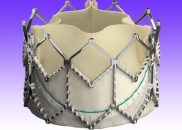The need for permanent pacemaker implantation (PPM) continues to be one of the main challenges in TAVR, especially with self-expanding valves, with a pacemaker implantation rate that varies between 17.5% and 30% in large randomized studies, vs. 4% to 6.5% with self-expanding valves. Therefore, in an attempt to prevent the need for PPM implantation, the…
Post-TAVI Prosthesis-Patient Mismatch
Prosthesis-patient mismatch (PPM) occurs when the effective orifice area (EOA) after valve placement is significantly smaller compared with the patient’s body surface area (BSA), resulting in an increased transprosthetic residual gradient. The presence of PPM, especially in various surgical series, has been associated with long-term adverse clinical events. In relation to transcatheter aortic valve implantation…
Predictors and Evolution of Need for PPM after TAVR with Self-Expanding Valves
In the context of TAVR, one of the current challenges is the need for permanent pacemaker implantation (PPM), especially when using self-expanding valves (SEV). The information available in this regard remains controversial; while some studies suggest new PPM implantation will have no significant effect on clinical evolution, others have associated them with worse prognosis. As…
Lower Mismatch Rate with the New Self-Expandable Valves
Prosthesis mismatch (PPM) was introduced by Rahimtoola in 1978 and happens when the effective orifice area of a heart valve prosthesis is too small in relation to patient body size. Surgical valves have been well documented, but there is little information on percutaneous valves. The study looked at 757 patients undergoing TAVR with pre and post procedural eco-Doppler…
Small Aortic Annulus: What Valve Should We choose?
Courtesy of Dr. Carlos Fava Surgical aortic valve replacement in a small annulus (<400 mm2) is associated with shorter duration, higher valve deterioration and patient prosthesis mismatch (PPM). They present a negative impact as regards duration and evolution. TAVR might be an option, with superior hemodynamic outcome and lower PPM. Read also: “Patients and Healthcare…
TAVR: The Need for a Pacemaker Is Associated with Mortality
Courtesy of Dr. Carlos Fava. After a transcatheter aortic valve replacement (TAVR), the incidence of permanent pacemaker (PPM) implantation ranges from 6% to 30% in different studies, depending on the valve type used. This is due to trauma, ischemia, haemorrhage, and atrioventricular node and infranodal tissue oedema, provoking ventricular dyssynchrony similar to that caused by…
Post-TAVI Definite Pacemaker: How Harmless Is It?
Courtesy of Dr. Carlos Fava. Transcatheter aortic valve replacement (TAVR) has shown ample benefit in different groups, but one of its drawbacks continues to be the need for permanent pacemaker (PPM), which ranges between 5 and 30%. Its long term impact in terms of mortality is still controversial, since some studies associate it with…






